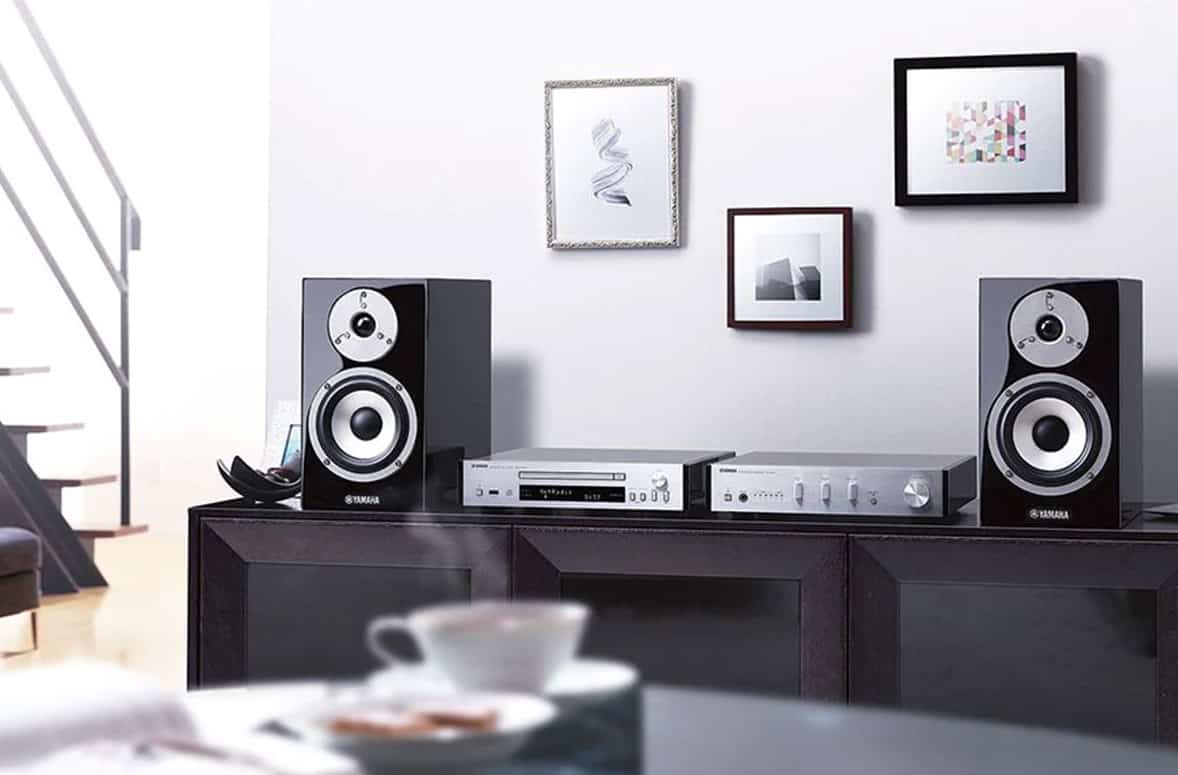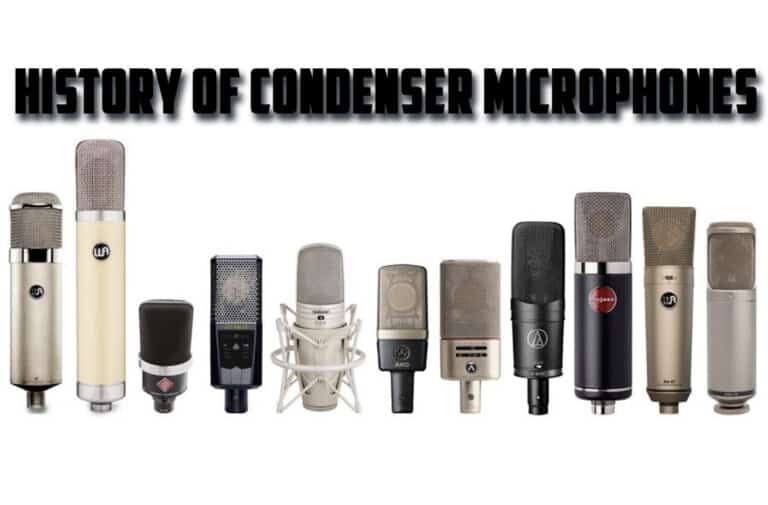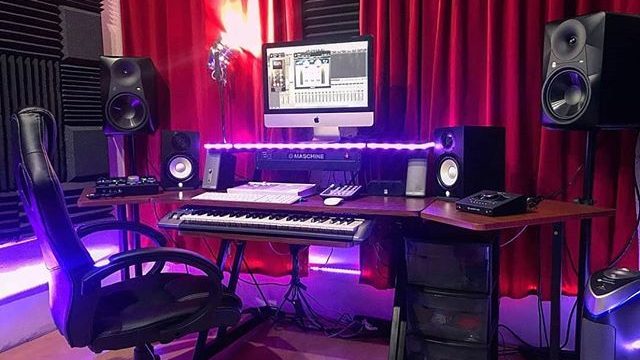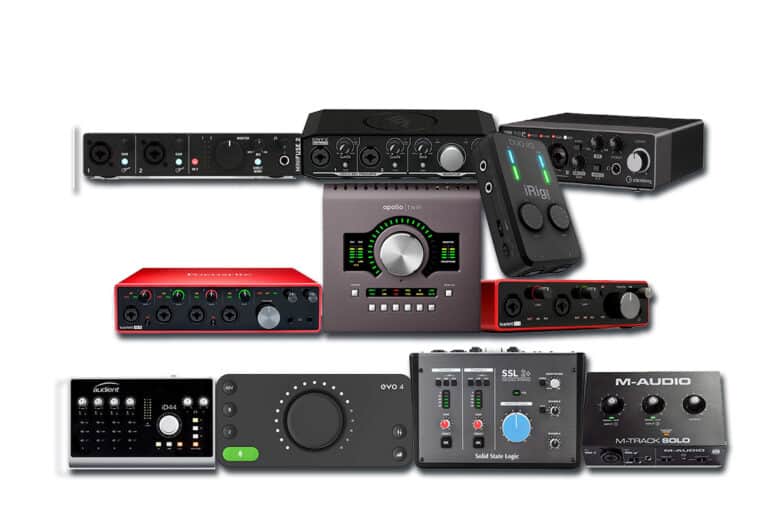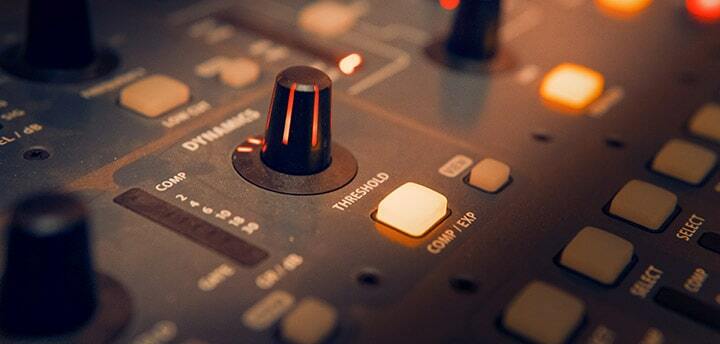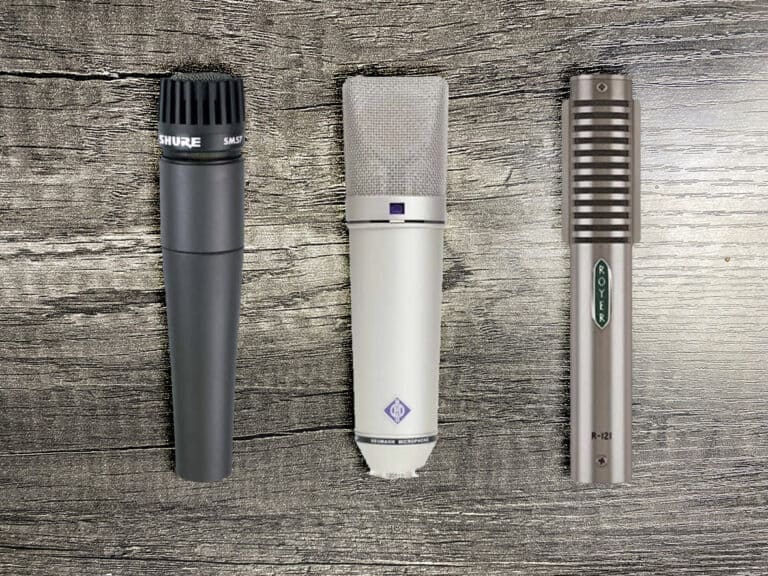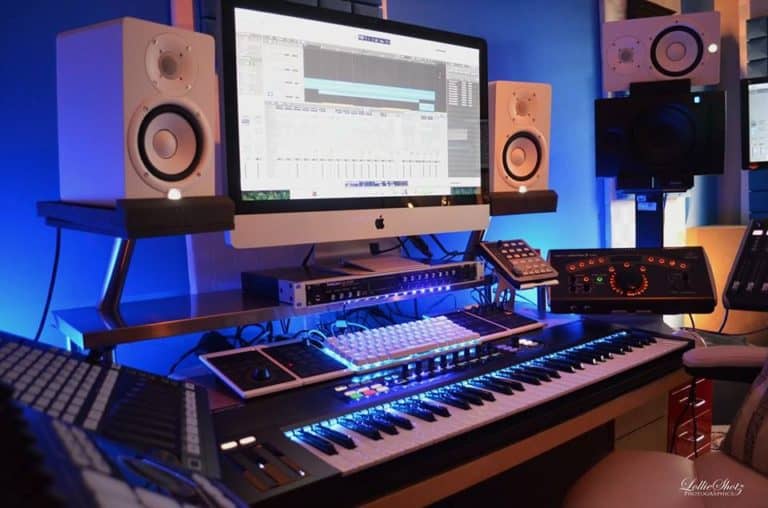What Is Hi-Fi? Hi Fidelity Explained in Excellent Detail for 2023
Embark on an exploration into the enthralling world of Hi-Fi. In its simplest form, High Fidelity refers to sound reproduction that mimics the source with absolute accuracy and precision. This technology has been around for decades and constantly evolves from analog systems to digital audio tools. Avid fans of Hi-Fi are passionate about attaining the most precise replication possible; this pursuit has revolutionized many aspects in the audio realm thus far!
Dive into the fascinating history of Hi-Fi and discover all its pieces that come together to form a perfect sound system. This article is designed for both advanced audiophiles as well as novices; it offers an in-depth examination of what exactly Hi-Fi can do! We’ll discuss factors that impact on audio quality, so you can make knowledgeable choices when deciding on your ideal audio setup!
Exactly, what is Hi-Fi?
Hi-Fi or High Fidelity is a phrase utilized to denote the pinnacle of sound reproduction systems that seek to deliver true and precise replication. The term “fidelity” signifies how well a system reproduces audio without modification or degradation.
Hi-Fi systems are engineered to give you the highest quality listening experience possible. With amazing detail, clarity and fidelity, it is designed to make you feel as if you were in a live performance – with natural sound reproduction that accurately captures what was originally intended.
They provide an optimal way to experience music and other forms of audio content, allowing listeners to hear these recordings as intended. From classical to rock, jazz, podcasts, audiobooks or radio broadcasts—Hi-Fi systems operate with all genres in mind, delivering a listening experience that is faithful and superior in quality.
Hi-Fi, a term coined in the early 1950s, took off with the revolution of sound reproduction technology. In merely 10 years, it was universally accepted; becoming a household name by 1960 and gradually increasing its renown through out subsequent decades.
You can these systems anywhere, they are ubiquitous, found in many more places than just homes and studios. Whether it’s providing an immersive listening experience at home or supplying a lively ambiance for customers in public spaces like restaurants and shopping centers, these systems offer the perfect soundscape to all kinds of environments. Even concert venues rely on them to ensure that their audiences get enveloped by high-quality audio experiences.
Hi-Fis provide a listening experience that is unparalleled in accuracy and naturalism. With their capability to reproduce even the subtlest nuances of any recording, listeners can enjoy sounds they may have not previously noticed with inferior sound systems. Plus, users get the added benefit of being able to customize settings depending on what works best for them – providing an entirely personalized auditory adventure!
Nevertheless, Hi-Fis do have some downsides. The cost of purchasing and setting up a Hi-Fi setup can be high, as well as requiring specialized understanding to get it working its best. Plus, due to their bulkiness they’re not very portable – making them inconvenient for when you want music on the go.
Are you looking to upgrade your sound system? With so many systems available, it can be overwhelming deciding which one is right for you. Traditional Hi-Fis feature separate components such as an amplifier, speakers and a CD player or turntable. For those who prefer convenient audio on the move, portable varieties come with features including Bluetooth connection and rechargeable batteries. Meanwhile integrated Hi-Fi systems are ideal if simplicity is key – combining all elements into a single unit that’s easy to assemble and use!
To truly experience the immersive sound of Hi-Fi, it’s critical to select high-grade components and optimize your listening space. A wide range of retailers offer Hi-Fi systems that vary in price, size, and specifications – so take time to evaluate which system best meets your needs. Furthermore, make sure you are playing quality music recordings and create a distraction free environment with optimal acoustics by reducing background noise and adjusting your equipment accordingly for the most exquisite sound possible.
Importance of Hi-Fi in modern music
Hi-Fidelity sound has revolutionized modern music enjoyment, imbuing listeners with an experience that is true to the original recording. The importance of this technology and its impact on how we listen cannot be understated—it has become invaluable in setting a new standard for musical appreciation .
Hi-Fi systems are remarkable for their ability to recreate music at an astonishingly high fidelity, conveying even the minutest intricacies and nuances of a recording with stunning accuracy. Music aficionados who seek to experience songs in their purest state will undoubtedly benefit from Hi-Fi, as it can bring you closer than ever before to hearing a live performance. Embrace your love for music by discovering what Hi-Fi has in store!
They are renowned for their expansive array of customization options. Not only do they allow listeners to personalize the sound according to their preferences, they also permit the perfect audio experience that brings out each music genre’s best features. Genres and recordings differ in terms of sound characteristics so it is crucial that one can have total control over what kind of listening experience they wish to achieve – Hi-Fi provides this opportunity!
Hi-Fis are an essential component of the music industry, specifically for recording and mastering. In a studio setting, Hi-Fi systems help engineers monitor and assess recordings to ensure they sound as good as possible. By using this technology during production, musicians and producers can make more educated decisions concerning the audio quality of their work – leading to superior songs that everyone will enjoy!
Hi-Fi not only provides an exceptional and pristine listening experience, but it also helps music lovers all around the world to gain a deeper appreciation for music as an art form. Its accuracy makes even the granular details in recordings stand out that would’ve otherwise gone unnoticed, allowing listeners to connect more deeply with each song.
Even with all of the advances in digital music, Hi-Fi still has a significant part to play. Music aficionados still prefer to use high-quality Hi-Fi systems for an unmatched listening experience when compared to streaming services. Additionally, this ongoing popularity of Hi-Fi technology has helped drive innovation and creativity within the industry as musicians are now producing songs that sound their best on these superior audio devices.
History

From the outset of sound reproduction, engineers and scientists sought to refine technology for higher fidelity recordings. In the beginning stages, audio quality was hindered by primitive means of capturing sound; thus resulting in muffled tones or even distorted sounds that lacked clarity and detail. Fortunately, advancements throughout the 20th century allowed us to witness incredible developments in Hi-Fi technology.
In the 1920s, Hi-Fi technology experienced a major leap forward with the introduction of electrical recording. This pioneering process allowed for recordings to be reproduced much more accurately in terms of both frequency range and dynamic range than ever before. As a result, what listeners heard was far clearer and full of greater detail.
Throughout the 20th century, innovative engineers and researchers worked tirelessly to refine Hi-Fi technology for higher sound fidelity. In the 1930s, magnetic tape recording was introduced which further increased this quality, followed by stereo recording in the 1950s that provided a more compelling acoustic experience.
The phrase “Hi-Fi” was coined in the 1950s, shortly after new technologies were unveiled that enabled remarkable audio fidelity. Hi-Fi systems rocketed to notoriety and by the sixties had settled comfortably into everyday language.
The 1950s saw the dawn of a revolutionary new era in Hi-Fi technology with the arrival of solid-state electronics, which allowed for small and energy efficient systems. These components swiftly overtook their bulky vacuum tube predecessors, leaving them obsolete in modern audio production.
In the 1970s, digital audio technology revolutionized music production and reproduction. Thanks to this technology, recordings achieved unprecedented levels of clarity and precision that made them virtually indistinguishable from their original sound sources.
In this digital age, Hi-Fi technology is still advancing with the emergence of high definition audio and wireless streaming capabilities. Although we have access to streamed music, many people continue to prefer Hi-Fi systems for its superior sound quality – not only in clarity but also a unique listening experience. Even artists are utilizing this form of technology which demonstrates how truly amazing it can be!
How Hi Fi works
Hi-Fi, or High Fidelity audio systems, provide an authentic and faithful reproduction of the original sound. These superior sound systems use a blend of components and technologies to bring you crystal clear playback that truly captures what it was meant to be heard as. Now you can enjoy your favorite music in its full glory with Hi-Fi!
Hi-Fi is all about creating sounds that are as close to the original recording as possible. It requires a wide range of sound frequencies from low bass up to high treble in order to form an even, distortion free output that plays with superb accuracy and clarity.
A Hi-Fi system is composed of a few components, including an amplifier for intensifying the signal from the source component to a level that can be handled by speakers. The latter then transforms electrical signals into audible sound waves so you could appreciate your favorite music on full blast! An example of the source component might include a turntable or CD player.
The source component is where the primary sound is kept, regardless if it be a physical vessel like a vinyl record or CD, or digital format such as high-resolution audio file. This part of the system takes in all information from recordings and transmits them to your amplifier for refinement.
If you’re looking to improve your audio experience, choosing the right Hi-Fi system should be one of your main priorities. The two primary types are digital and analog Hi-Fi systems. Digital models work by converting sound information into a digital format that is then processed and amplified via its own electronics. Analog systems utilize analog circuits for processing, resulting in a more organic and pleasing tone overall.
Digital Hi-Fi systems offer more versatility and ease of use, as they can support a variety of digital formats with their sophisticated capabilities such as digital signal processing and wireless streaming. Additionally, Analog Hi-Fi systems provide the classic warm sound that many music buffs crave— creating an unmistakable auditory pleasure.
Apart from the main components, Hi-Fi systems might also consist of extra elements like equalizers, subwoofers and room correction systems. These additional tools can be used to modify the sound quality of your system in order to fulfill both your individual preferences as well as the specific acoustics of where you’re listening.
Pros and Cons of Hi-Fi
Hi-Fi or High Fidelity systems are the ultimate in audio quality, providing an accurate and natural sound that faithfully reproduces the original recording. But owning a Hi-Fi system also comes with pros and cons to consider.
Pros of Hi-Fi systems:
Hi-Fi systems offer a superior audio experience, with clear and detailed sound reproduction that allows for even the subtlest of nuances in music to be heard. With Hi-Fi, listeners can appreciate compositions like never before – hearing each note at its original level of accuracy and clarity.
Make It Yours: Whether you want to achieve the perfect sound for your living room or just be able to fine-tune it to suit your individual taste, Hi-Fi systems provide a wide range of customizable options. With equalizers, subwoofers and other features like room correction systems at your fingertips, you can shape the system’s sound exactly as you’d like – so that no matter where (or who) is listening in on the music, they’ll enjoy an audio experience tailor-made just for them.
Cons of Hi-Fi systems:
A hefty price tag: Investing in a Hi-Fi system can be quite costly, especially when it comes to sourcing the necessary components for optimal sound quality. With such an expensive initial outlay, prospective buyers should ensure they’re getting value for their money before committing.
A specialized skill set is needed to install and properly run a Hi-Fi system, which might be prohibitive for those who don’t know much about audio equipment or electronics. This can become an obstacle that may hinder some users from taking full advantage of the capabilities these systems offer.
Check out Audioholics for a good source for all things Hi-Fi
Types of Hi Fi systems
A. Traditional Hi-Fi Systems

Craving an immersive sonic experience? Then Hi-Fi systems are the way to go! Traditionally, these audio setups consist of numerous individual elements connected with cables: amplifiers, speakers, plus source components such as CD players, turntables or digital media players. Neatly arranged on a rack or shelf system in your living room – you can now enjoy delightful sound reproduction at its finest!
Traditional Hi-Fi systems are the optimal choice for sound quality and versatility. You can choose components based on their characteristics, allowing you to customize your system according to personal preference. Not only do they provide superior audio reproduction abilities but also durability due to the high-quality pieces that make up these systems. This makes traditional Hi-Fi perfect for those who want a reliable listening experience year after year!
Setting up a traditional Hi-Fi system can be an intimidating undertaking. Not only do the bulky components require considerable space, but their cables are often difficult to manage and may not be aesthetically pleasing. To top it off, users must possess specialized knowledge about speaker placement and room acoustics in order to maximize sound quality.
B. Portable Hi-Fi Systems
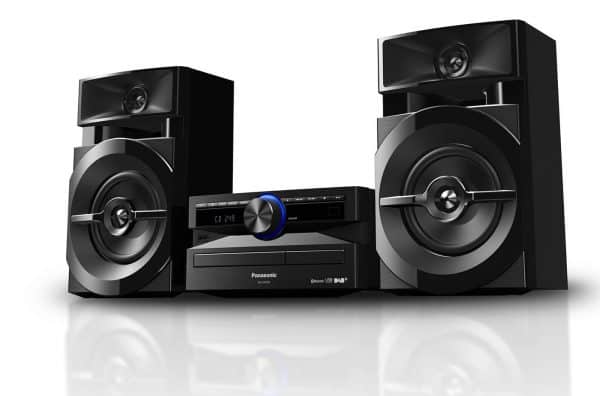
For music lovers on the go, portable Hi-Fi systems are undoubtedly an essential. They provide a stunning audio experience in a sleek and small package that runs solely off of its own power source. Plus, you can conveniently stream your favorite tunes directly to your system with wireless Bluetooth or Wi-Fi connectivity options!
Portable Hi-Fi systems come in two distinct categories: all-inclusive and modular. An all-inclusive system includes an amplifier, speakers, and a source component like a CD or digital media player; whereas to mix components with a modular setup you can select from amplifiers and headphones of superior quality. So whether you’re looking for convenience or customization – both types possess the potential to provide excellent sound performance!
Portable Hi-Fi systems are the perfect solution for music lovers and audiophiles alike. Not only are they incredibly convenient, but their portability allows you to enjoy your favorite tunes wherever you go! Plus, these innovative devices come at an affordable price point compared to traditional audio setups — all while offering superior features such as wireless connectivity and digital signal processing.
Although many portable Hi-Fi systems boast excellent sound quality, they can’t quite compare to the fidelity of larger traditional Hi-Fi systems. This is because of their limited size and compact design which restricts the level of audio output they are capable of producing.
An undeniably superior listening experience awaits you with a Hi-Fi system: the accuracy and intricate details of its sound reproduction, together with how it allows customization of your auditory output, grants you an engaging and immersive audio journey like never before.
C. Integrated Hi-Fi Systems

Hi-Fi systems with integrated components make setting up and using your audio system a breeze! Each unit contains an amplifier, speakers, and source component such as a CD player or digital media player all in one attractive package. Now you can enjoy the convenience of having everything housed together for easy access.
Integrated Hi-Fi systems are advantageous for their convenience, space efficiency and affordability. Not only is this type of system cost-effective but it also takes up less room than its traditional counterparts. In addition, due to all the components being enclosed in a single housing, integrated Hi-Fi systems have an attractive design that’s pleasing to the eye!
When it comes to integrated Hi-Fi systems, the downside is clear – they lack customization opportunities. Since all parts are included in one single unit, upgrading or replacing some of them can be difficult or even impossible. Moreover, sound quality and features may not reach their full potential with such a system compared to traditional ones.
I hope this helped you understand a bit more about what hi-fi is.
Tags: what is hi-fi audio, what is hi fi
Related Articles
What is a Preamp
What is a Synthesizer
What are the 3 types of microphones
5 More Excellent Essentials and How To Make Music at Home!
9 Best Budget Audio Interfaces For Excellent Recording Results!
9 Best Digital Pianos for Beginners Who Love Muisc
9 Best Microphones For Recording Acoustic Guitar That Sound Amazing!
9 Best Vocal Microphones To Make Your Vocals Sound Amazing!
9 Best Studio Headphones: Amazing Music To Your Ears
9 Best Condenser Mics That Will Blow Your Mind, but not Your Budget!
The Ultimate Guide to the Best Vocal Mics: Condenser Edition

